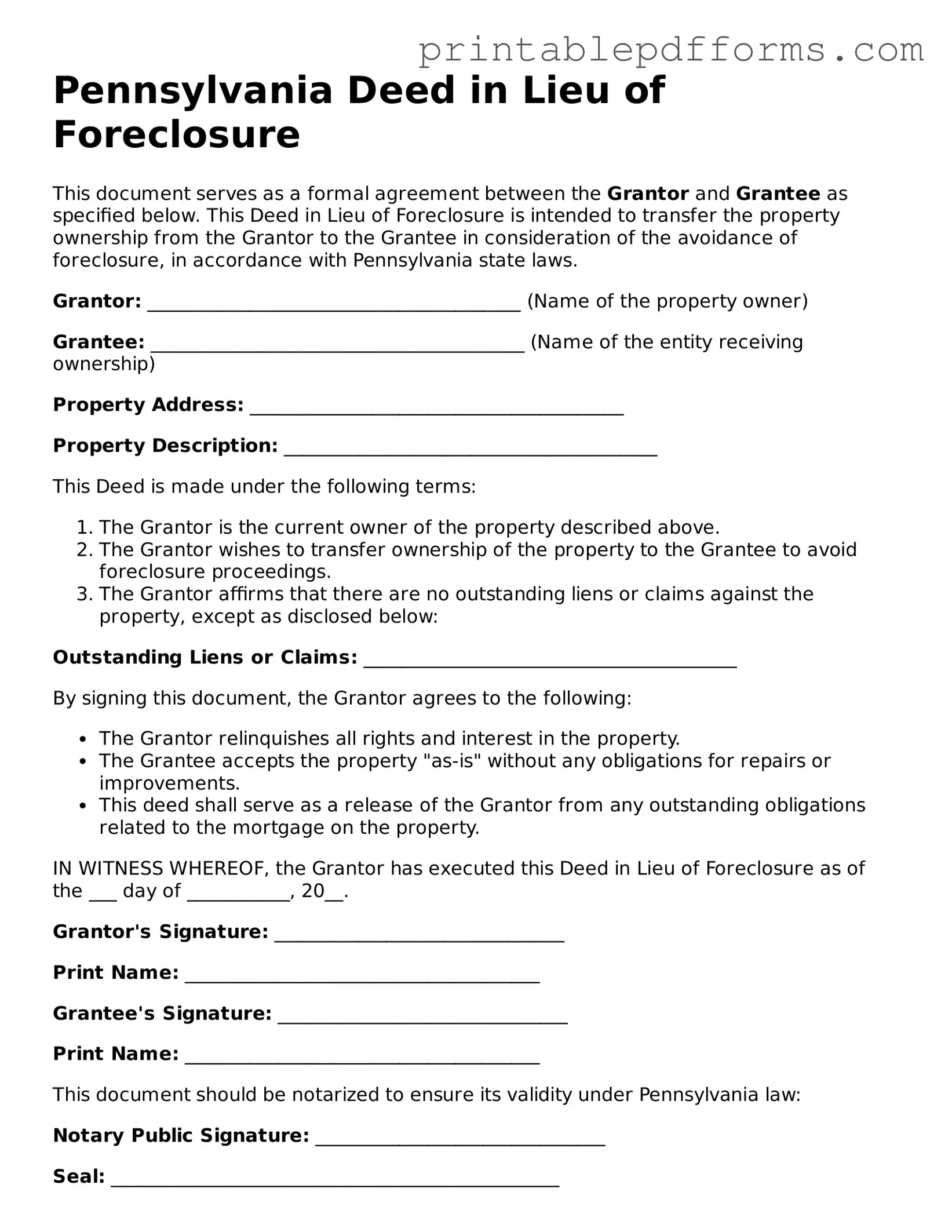Pennsylvania Deed in Lieu of Foreclosure
This document serves as a formal agreement between the Grantor and Grantee as specified below. This Deed in Lieu of Foreclosure is intended to transfer the property ownership from the Grantor to the Grantee in consideration of the avoidance of foreclosure, in accordance with Pennsylvania state laws.
Grantor: ________________________________________ (Name of the property owner)
Grantee: ________________________________________ (Name of the entity receiving ownership)
Property Address: ________________________________________
Property Description: ________________________________________
This Deed is made under the following terms:
- The Grantor is the current owner of the property described above.
- The Grantor wishes to transfer ownership of the property to the Grantee to avoid foreclosure proceedings.
- The Grantor affirms that there are no outstanding liens or claims against the property, except as disclosed below:
Outstanding Liens or Claims: ________________________________________
By signing this document, the Grantor agrees to the following:
- The Grantor relinquishes all rights and interest in the property.
- The Grantee accepts the property "as-is" without any obligations for repairs or improvements.
- This deed shall serve as a release of the Grantor from any outstanding obligations related to the mortgage on the property.
IN WITNESS WHEREOF, the Grantor has executed this Deed in Lieu of Foreclosure as of the ___ day of ___________, 20__.
Grantor's Signature: _______________________________
Print Name: ______________________________________
Grantee's Signature: _______________________________
Print Name: ______________________________________
This document should be notarized to ensure its validity under Pennsylvania law:
Notary Public Signature: _______________________________
Seal: ________________________________________________
